Leaderboard
Popular Content
Showing content with the highest reputation on 06/13/2017 in all areas
-
Hello Finally had a day off after weeks of work to go detecting. My partner and i both had new purchases to try. First i tried out my new 18" detech mono coil for my 5000. It is an amazing coil. Very very quiet in tough soil. It is really sensitive to small targets. I dug one gold piece today at .24 gr. In about 20 minutes of detecting. And some lead targets missed by my previous grid sessions with the coiltek 14 and 18" elites. The detech 18" is definitely a keeper for my arsenal. Next was the amazing performance put on by my lovely partner and her new gold monster. I let her find quite a few undug targets at a site where we found hundreds of pieces of tiny gold in the past. Then once she had a few targets. I tried to follow her gold monsters performance with my makro gold racer running in all metal with sensitivity 75 and enough isat to run a smooth threshold. Any isat less then 7 dont work here. Blanks out the threshold constantly. In the end i could get a signal on 1/3 of her gold monsters undug targets. Mostly they were all a tiny break in the threshold. I also tried my disc 2 mode with the sensitivity turned up to where it gets sparky.(90) But they still just had a small beep. Her gold monster had a totally different reply to the undug targets. Very loud. Which i believe was already stated by steve in his report. We also had her try gold monster in many manual sensitivity settings in all metal. All the way to manual 10. But it is a little sparky up too high. Best manual setting for this site was 6. But the targets were either alot quieter or non existent with that setting. The disc mode was also applied and sounded off well on them. Just not as sensitive. The autoplus mode was definitely the best app for our conditions at the goldfield. The mineralization only made an occasional peep in autoplus. But was easily recognizeable. A few hot hematites sounded off. But they can be checked in a quick switch to disc. Then only once in awhile they would slightly ping only in one direction. So then we dug up the undug targets. Some were tiny birdshot but most were gold, missed previously with other detectors. Everyone of them amazed me how loud they were for their size. Especially the 2 that wont even weigh in the 10ths of grains. These targets were not right on the surface or i would have heard all of them with gold racer. They were deeper then gold racer could detect. I have mostly detected with vlf detectors for 32 years and i could not believe what i was seeing. It was actually pretty funny. Now i feel like i am running old school equipment with my gold racer. I am definitely going to be making the change to gold monster myself. No its not a zed or a pulse induction unit, but i am willing to put money on youll find gold you missed with whatever you are using now. If you already own a monster then take a look at the red dot at the end of the foreign writing and see how small it is. Thats how small the gold we found. Only it sounded like a shallow gram piece of gold. All the 18 pcs that gold monster found totaled only 1/2 dwt. Big money! I have seen the promised land and it is real and its called gm1000. Good luck23 points
-
Greetings fellow prospectors! For a more than a year I have thought about doing up some Youtube videos on prospecting and I have finally gotten off my backside and done it! This is the first video of a 3 part set where I will be taking a look at Minelab's new Gold Monster 1000 nugget oriented metal detector. This part one video is an introductory discussion about its various features and settings. In the next couple weeks I will put up part 2 which will be on testing the GM1000 out in the field and then part 3 will cover some practical suggestions for prospectors on getting the most out of your Gold Monster 1000 and a discussion of some of the best kinds of places to use the GM1000. I will publish those other parts soon, but for now, here is the part 1 video. The quality here may not be perfect, but there is a lot of good information and content in this video. Additionally, now that I have the ball rolling you can expect other videos on different prospecting topics coming later once I have completed these 3. - Chris11 points
-
Ok, it is not the kind of flakes you normally think of when you think CALIFORNIA. We had a 'cold snap' in the west the last 3 days and that gave me a chance to go out and detect the hot deserts of Southern California. The cold snap came after a Wednesday fishing trip. It started off slow for the white sea bass and the yellowtail. We didn't get any so we went after the rock fish in deep water. This was my first trip of the year and it was a lot of fun. I went over my limit (10) but there were others on the boat that got my extras. At the end of the day we were near the island and managed to get our version of a barracuda and another fisherman got a white sea bass. So I left out for a 3 hour drive to our most productive nugget patch. Last summer we were working it pretty hard and found most of it but Swifty has been finding new patches so we went back. My last 4 trips had resulted in skunks. I was beginning to question my technique and settings. I was finding shots, lead, wires and hot rocks but NO GOLD. My headphones were sounding scratchy and losing the signal when trying to pinpoint. I bought a new set of headphones to make me feel better. (Superlux HD668B Dynamic Semi-Open Headphones) These were recommended on my other post about 'What Can You Hear?.' Now I know what I can hear! I heard all of the same trash but the sound was smoother than my worn out headphones. They were also comfortable (until the very end of the day). So I'm going along with the normal signals and a bit 'long in the tooth' attitude and I heard another hot rock. Even the 7000 and the 2300 find hot rocks in this field. Sometime in the late morning a hot rock was not. It was the rough flake nugget. I saw it in my scoop and could barely see any gold as it was covered in caliche. After a bath in my mouth I knew it was a skunk breaker. I also knew it was thin so I logged it in to my findpoints as .5g. It is really .82g. Friday I had gotten to the field at 4:00 AM and it was a full moon. Sunrise was 6 AM but you could see around 5:30 AM. Sunday's trip was similar but I got there at 5:00 AM and the wind was blowing about 25 mph and the temperature was under 50F. I was cold and went back into the car for a nap. Once the sun was up about an hour I got out and braved the wind until about 2:30 PM. Along the way I found the second corn flake that is 'smaller' but weighs more at .92g. It is a lot of work having fun sometimes but someone has to do it, right?9 points
-
All Winter/Spring in Rye Patch this year was a tough deal fighting the ground noise. We knew we had to wait till Summer for the ground to dry out for some spots that hold the deep gold. Robin & I, were on and extended road trip that started for a few days in Laughlin, NV and a hunt out in the gold basin area. Then a short drive to Las Vegas for a couple days and then ending up in Reno stopping here and there for a hunt on placers along the way. During this time, a couple Buddies where sending me pictures of their Rye Patch poke. Braving the heat and with night hunts fighting off the Rattlers with some impressive pokes! While in Reno, they told me to checkout weather for the upcoming weekend! What Spring time conditions in June! ? We made our hunt plans. I got home and unpacked Robin's Jeep and tossed my Detecting gear in my truck and the next morning bright and early hit the road with some heavy rains on the California side of the hill on I-80. Rains, gave way to partly cloudy in Nevada...new speed limit East of Fernly, NV is 80 mph, what! My hunting partners Rudy & Steve caught me in Lovelock filling my truck up and off we went...arriving at Rudy's last spot of deep nuggets at 11:00 am. Rudy, deployed out of Steve's pickup like a seasoned Veteran and was on his little patch as Steve and I, was still gearing up! He had two nuggets before we hardly had our detectors tuned, each around a foot deep. I knew the area and gave Rudy a wide berth respecting his 23" biceps ? as he swings and extra large pick with rocks flying in all directions on each swing of his pick. I soon, popped two deep nuggets and Steve yanked out a fabulous 2 dwt Chevron. We had to run back to the trucks as a heavy downpour of rain gave us a break for a late lunch. Soon after, hit it again, or should I say Rudy with a couple more nuggets before we headed back to camp. Next morning, was more of the Rudy show! He called me over to his chewed up 20 ft long deep nugget Patch for a listen of a target! I stuck my coil into a 6" scrap and heard the classic nugget tone...we both smiled at each other as I gave a head nod of approval ?. We now began a 30 minute dig through the shale. Rudy's pick at 15" had to give way for my special bedrock pick in the back of my truck. At 20" this target was screaming bloody murder on the GPZ, but so does a 2 dwt'er! Many breaks later and another 4" deeper we knew we were close. Rudy's pen pointer was pointing at the crevice in the bottom of the hole. Steve, finally works his way over to see what we are doing on our bellys with our heads in a big hole! I give way, as I heard his bench made pocket knife open up and Rudy moved his giant finger away from the pointed spot. A couple scraps and out pops the fruit to the effort of the dig! Over 8 dwts nugget, is sweet in any gold field new or old diggings. Steve and I, bowed to Rudy as the King of the short hunt weekend as he added a couple more before he finally let us pick up the scraps in his mini patch. He was laughing at our misfortune sipping a cold one in a lawn chair for a couple dinks! But, it's the hunt, the thrill. What a great hobby to keep your blood pumping...over 18 dwts on them coils. The trip home with a cold I picked up from Robin, hit me hard and so did the surprise snow storm on top of Donner Pass. Home safe and nursing my cold and wishing I was on the hunt, before the heat comes back to the high desert! Until the next hunt LuckyLundy7 points
-
I stand about 6 feet but the GM 1000 shaft is just too long. So this is what I done to make it right for me only. I first put the shaft together then put the large coil on. Then I slip the control head on and found if I put it just past the end shaft where the middle starts is just right for me. I then slip the arm rest where I wanted but this leaves the shaft hitting me when I swing my detector. I took it and cut off 5 1/2 inches. this still leaves 2 inches behind the arm rest. You can now unscrew the end shaft with arm rest from the other. You now have the control head with the coil on two parts of the shaft and the other with the arm rest. When you screw them back together you may have to adjust the arm rest a little. You will find the longest part with the head and coil is 36 inches. I buy gun cases for my metal detectors and most are 38" if not longer with three big pockets on one side. The cost runs about 79.but can get them on sale for 49-59. Be sure this will work for you before you make a cut. Chuck PS The end shaft is aluminum and you can knock the plastic plug out after you cut the shaft to put it in the other.2 points
-
Randy, Rudy & I, missed seeing you this last Winter/Spring in Rye Patch. We talked about you helping out with Rudy's last big nugget at this location. This one was about 100 yards from the one you helped us dig. We had another couple watching this dig with big smiles as they held his nugget! Hope to see ya soon, Rick2 points
-
I went out this morning looking for what the storm has brought in. We had some waves in the bay up to 15 feet! When detecting after a storm it can be good but it can also be 'blown out' with very little pattern. I hunt for 'focused energy' and patches. This can take a lot of walking but can also result in rewards. My initial pass at the beach was along the cut (such that it was) which was mostly pushed over. The waves and tide had gotten so big that nothing stopped and it blew right over the blanket line. This makes for a good day if you are a beach comber but difficult for detecting. I kept walking and finally found a patch while the tide was still high. I came back to it an hour or so later when there was a bigger beach. The gird began and I was in a nickel, dime and quarter patch worth sticking with. This got me $18+ and a couple of keys. Then on one of my shallow penny hits I looked in the scoop and GOLD! Really? I put it back down on the beach and tested again and still penny on my 3030 ... must be gold plate. I'll check it when I get my glasses on ... time to work the patch more. When I got home I looked and J A 585 with a diamond ... maybe it was the size ... a penny won't quite fit inside it. It weighs 11.5 g. Yahoo, GOLD RING.2 points
-
I'm sure running the Reactivity up to 3 would have quieted the ground and on coin sized targets, you wouldn't be sacrificing much overall performance. It has been said that raising the Reactivity tends to shrink your coil coverage footprint. I don't know to what extent that occurs, but on tiny gold nuggets I'm looking to get all the performance I can out of a detector that was originally designed for coin, jewelry and relic hunting. My primary detector will always be the Z7000, but there are times when I would like to jump out and check some exposed bedrock or old tailings piles without the whole suiting up with the Zed. My other primary purpose for the Deus is to use it as a discriminating pinpointer when chasing deep targets with the Zed. This last year detecting in Baja involved far too much digging deep trash in hot weather. It really cuts down the number of productive detecting hours when you burn out on the first 5 or 6 deep holes. I found myself looking for reasons not to dig obviously deep targets. I guess my point is I'm looking at a better mousetrap, for some pretty narrow circumstances. The Deus is attractive to me because of its overall weight and collapsible enough to fit in my pack for 3/4 day hikes in rough terrain. And, if I ever get excited about coin/relic hunting I have the perfect machine for the job. I imagine once the Deus Elliptical coil comes out, we'll see some good comparisons and side by side testing by guys a whole lot smarter than me on this stuff.2 points
-
Here's a decent treatise at White's website: https://www.whiteselectronics.com/detecting-101/how-metal-detectors-work/?lang=gb2 points
-
OK DS. Here goes. In my lay(ze)mans terms. Detectors are just two way radios. They broadcast and receive through their antenna, called the search coil. When detectors transmit a radio signal into a conductive object (for me typically a square nail) that object will develop a brief energy field around it (induction). When the field fades away the detector is able to receive that "collapse" and convert it to an audible signal. For the transmitted signal to penetrate dense material (the ground) it must be sent at a very low frequency-V.L.F. A PI detector sends out it's signal in pulses so that the induced field from slightly conductive stuff, like mineralized ground, goes away before the receiver can pick it up. This allows for easier use in "hot" ground and greater depth at the expense of sensitivity to itsy bitsy stuff and no discrimination. A VLF detector doesn't transmit in pulses which enables it to guess at an objects conductivity which gives it the ability to fairly accurately discriminate and makes it more able to respond to teensy weensy targets at the expense of depth and the ability to work hot ground. Now the GPZ 7000 came out when Minelab found one in a crashed flying saucer in the Australian desert and reverse engineered it. So even they don't quite know how the darned thing works. FM has the best suggestion- get your information in the archives from those who know what they're talking about. Hope this helps.2 points
-
I do what I can to foster competition that develops alternatives to the all too common VLF detector. There are plenty of options out there, but in my opinion they all weigh too much or cost too much. Usually both. I envision people out there with a popular VLF metal detector for beach, relic, or gold detecting. These machines all sell for around $700 and weigh 2.5 - 3.9 lbs. Perhaps they would like to add a ground balancing PI (GBPI) to what they have. I think that for "normal people" with normal budgets a machine under $2K and under four pounds just makes sense. It would be more than twice what they spent for their VLF, and in this day and age there is no reason why a decent PI should weigh over 4 lbs. I am drawing the hard line at 5 lbs. I am setting under 4 lbs more as an aspirational goal that I think can be achieved, but recognize that battery power and coils are key inhibiting factors in high power PI systems that may make sacrifices in depth necessary to get total weight under 4 lbs. To clarify what I am talking about here, I should say that for many people a $700 VLF detector is a great place to start and in many cases is all a person ever needs. However, there are places where extreme ground mineralization and mineralized rocks (hot rocks) severely impede the performance and use of VLF detectors. Alternative technology to deal with these conditions has been developed, by far the most familiar being the Minelab ground balancing PI (GBPI) detectors. These differ from common PI detectors by having the ability to ground balance. Other brands have offered the Garrett Infinium (discontinued) plus Garrett ATX and the White's TDI models. These detectors are used not just for gold prospecting but also by relic hunters, beach detectorists, and others who face challenges regarding ground mineralization and VLF detectors. Frankly, in my opinion GBPI technology is largely maxed out. The main room for improvement comes now in better ergonomics at lower prices. This challenge therefore limits detectors to those that weigh under 4 pounds with battery included, and which sell brand new with warranty after discounts for under US$2000. Detectors need not be ground balancing PI models, but must offer similar ability to ignore mineralized ground and hot rocks that trouble VLF detectors. I am going to rate detectors as to their relative performance using what I call the "Minelab Rating Scale. Details here. 1. Minelab SD 2000 - crude first version, very poor on small gold, excellent on large deep gold 2. Minelab SD 2100 - vastly refined version of SD 2000 3. Minelab SD 2200 (all versions) - adds crude iron disc, ground tracking 4. Minelab GP Extreme - adds greatly improved sensitivity to small gold, overall performance boost. 5. Minelab GP 3000 - Refined GP Extreme 6. Minelab GP 3500 - Greatly refined GP 3000, last and best of analog models 7. Minelab GPX 4000 - First digital interface, rock solid threshold 8. Minelab GPX 4500 - Refined GPX 4000, solid performer 9. Minelab GPX 4800 - Released at same time as GPX 5000 as watered down version 10. Minelab GPX 5000 - Culmination of the series, current pinnacle of GBPI prospecting machine technology. All Minelab models leverage an existing base of over 100 coil options from tiny to huge. I am a very practical person when it comes to detecting. I know all the existing models and options by all brands very well, perhaps better than almost anyone. This is the way I look at it is this. If I personally were to spend a lot of money to go gold prospecting for one month, and needed a GBPI detector, considering machines past and present, what would I get and in what order of choice? Put aside concerns of age, warranty, etc. just assume functioning detectors. Here is the issue in a nutshell. On the Minelab scale of one to ten as listed above, I would be generous in rating the White's TDI SL as a 2. Same with the Garrett Infinium which I will mention in passing as it is no longer being made. If I was going to spend a month of my time and a lot of money going on a prospecting trip, I would choose a TDI in any version over the SD 2000. I might go with a TDI Pro over a SD 2100 but I would have to think real hard about that, and when push comes to shove I would go SD 2100 were it not for the realities of age I said to ignore. A newer TDI Pro might be a better bet than a very old SD 2100 from a reliability standpoint, but again, this would be a tough choice. The TDI SL not really. In my opinion I would be shooting myself in the foot to go on this hypothetical trip with a TDI SL instead of a SD 2100. You see the problem now? The Garrett ATX fares better. I would rate it a 3, roughly analogous to the SD 2200 variants. Still an agonizing choice really and the ATX being new versus SD 2200 being old might again be the tipping point, but from a pure prospecting options perspective the case can be made that the SD 2200 might be the better way to go. The problem for this challenge is the ATX weighs way over 4 lbs and sells for slightly over $2000. The price is close enough really but the 7 lb weight is way off. That's it folks. That is reality. The best of the best that the competition can offer can only go solidly up against models Minelab has not made in years. I am not saying that to be mean or as some kind of Minelab toadie, that is my pure unvarnished opinion as a guy who is pretty well versed on the subject. Let's bring it all home. This person with the $700 machine really, really wants that under 4 lb, under $2K GBPI machine, but if they do their homework they discover that truthfully, they would be better off shopping for a used Minelab than what the competition offers new. With the TDI SL rated as a 2 the ATX in a much lighter box at under $2K is a solid win as a 3. A well designed ATX with standard dry land coils would look very enticing as compared to the GP series Minelabs. But Garrett refuses to budge! White's can certainly do something, anything to improve the TDI SL. A battery that lasts all day would be a good start. In the end they are limited by the basic single channel design of the machine. The SD 2000 dual channel design was literally the answer to and the improvement on the single channel technology used in the TDI, the basics of which predate the SD 2000. Still, White's currently owns the under 4 lb under $2K GBPI category so they have the first out of the starting gate advantage. Anything they do would at the very least just show they have not given up. The Minelab MPS patent that formed the basis of the SD series has expired. Not sure about DVT, which formed the basis of the GP series. Where is the competition? What the heck is going on here? Much gnashing of teeth and pulling of hair is going on here, that's what!!! That is my challenge to the manufacturers. Under 4 lbs, under $2K, on the 1-10 scale I am offering, what is the best you can do? The TDI SL as a 2? Really? Yes, really, that is currently the best of the best in the brand new ground balancing PI, full warranty, under 4 lb, under $2k category. You can pick up a 3.5 lb TDI SL right now brand new for $1049. The White's TDI SL takes the crown. Note that a challenger has a half pound of weight they can add to the TDI SL and still make the 4 lb mark, and retail can be almost double the $1049 of the TDI SL and still come in at the 2K mark. I therefore do not think my challenge is outright crazy. Hopefully we will see more competition in this wide open category soon. I have been beating this drum for years to no avail, but I do have reason to believe we are finally going to see more alternatives soon. I hope. Maybe? All I know is I have had it. I sold both my 6.9 lb Garrett ATX and 7.2 lb Minelab GPZ 7000 and am boycotting metal detectors that weigh over 5 lbs from here on out. I don’t care how well they work, I simply refuse to buy such heavy beasts anymore. In the future I will support and give my dollars to companies that pay attention to and prioritize lightweight, more ergonomic designs. White's Electronics TSI SL metal detector1 point
-
A common misperception among those new to metal detecting is that metal detectors can identify one metal from another. How much we wish that were true. The reality is that for all practical purposes the common metal detector target id scale is based on a combination of the conductive or ferrous properties of the item multiplied by the size and shape of the item. There are two common terms in use for this scale. The Target ID or TID scale is the most generic. White's also popularized the use of Visual Discrimination Indicator or VDI numbers. You will see references to both TID and VDI numbers and both refer to the same thing. The problem when you use Google is that TID also refers to Terminal ID number, which is for credit card machines. VDI gets far better results as the preferred term and so is what I will use from now on. The VDI scale is almost always arranged the same way by common convention although in theory it can be rearranged any way you want. The common scale has ferrous items on the low end and non-ferrous items on the high end. Ferrous items are like mirror images of non-ferrous items and so the most common arrangement of the VDI scale is with small items in the middle with ferrous getting larger in one direction and non-ferrous getting larger in the other direction. The ferrous and non-ferrous ranges actually overlap in the middle. Large Non-Ferrous Medium Non-Ferrous Small Non-Ferrous Tiny Ferrous/Non-Ferrous Overlap Small Ferrous Medium Ferrous Large Ferrous We can assign a numeric range to this basic VDI scale any way we want. Many early machines went with a 0 - 100 scale, with the ferrous compressed into the low end of the scale: 100 Large Non-Ferrous 50 Medium Non-Ferrous 20 Small Non-Ferrous 5 Tiny Ferrous/Non-Ferrous Overlap 3 Small Ferrous 1 Medium Ferrous 0 Large Ferrous The idea of ferrous as negative numbers made sense due to the mirror imaging in size between ferrous and non-ferrous. A very common White's scale runs from -95 to 0 to +95 95 Large Non-Ferrous 50 Medium Non-Ferrous 15 Small Non-Ferrous 0 Tiny Ferrous/Non-Ferrous Overlap -15 Small Ferrous - 20 Medium Ferrous - 40 Large Ferrous The "positive only" 0 - 100 VDI scale seems most popular these days with other manufacturers, but the scheme varies. Two very common setups are 0-40 ferrous and 41-99 non-ferrous OR 0-10 ferrous and 11-99 non-ferrous. But as I noted you can set this up any way you want and so other scales do exist. When we look at just the non-ferrous part of the scale, what is important is how the detector "sees" the target. In very simple terms conductive targets are either very weak or very strong or somewhere in between. Small items are weak targets. Low conductive metals are weak targets. Large items are strong targets. High conductive metals are strong targets. The shape matters. Irregular shapes or thin items are weak targets. Rounded and thick items are strong targets. On a conductive scale of 0 to 100: 0 = very small targets 100 = very large targets 0 = very thin targets 100 = very thick targets 0 = very low conductive metals 100 = very high conductive metals 0 = very irregular shaped targets 100 = very rounded targets, especially is a hole in the middle Add this all up and small gold items are low on the VDI scale and large gold items high on the scale. Silver being a better conductor than gold, a silver item will read higher on the scale than the identical size and shape gold item. In general silver will read higher than gold. However, a very large gold item can read higher than a very small silver item. Chasing thin hammered silver coins in the U.K., especially the cut varieties, is not that different than hunting gold nuggets. What you rapidly figure out is the metal detector VDI scale can only get repeatable results on certain man made items that are the same every time, like a U.S. nickel or a U.S. dime. And even these signals degrade when deep in the ground or in proximity to other items under the search coil at the same time. Given all the limitations, it is a wonder we get any degree of accuracy at all with detector discrimination systems. With that, I give you a standardized White's VDI scale taken directly from the control box of my White's DFX. This -95 to 0 to +95 scale is common on many modern White's detectors. Nearly all other detectors have the same relative positioning of items just with different numeric scales, an exception of note being the Fisher CZ detectors, which use a rearranged scale. This DFX scale is helpful because it includes gold coins. The main thing I want you to focus on here is the relative positioning of items on the scale. As a detectorist operating in the United States, I always pay attention to just three things 1. where do the ferrous numbers start? 2. where does a U.S. nickel read? and 3. where does a U.S. dime read? If I know those three things, I can adjust almost instantly to any detector scale in existence, because I know how everything else reads in relation to those three points on the scale. Standard White's VDI scale Looking at the scale you can use gold coins as a rough guide to where large gold nuggets will read, although coins being pure gold and round will read much better than gold nuggets of the same size. It might take a one pound gold nugget to read the same as a one ounce $20 gold coin, which in turn reads very close to the U.S. silver quarter reading. On the other end, tiny gold, tiny ferrous, and salt water, being a low conductive target, all overlap. This is why if you tune out salt water on the beach, you also tune out single post gold ear rings and thin gold chains, which read like small gold nuggets. If a prospector tunes out salt alkali readings on a salt lake, there go the small gold readings. And the chart shows that if you get too aggressive in rejecting all ferrous items, good items can be lost also. When I say small it is important to note what we are really talking about is small/weak readings. A large gold item buried very deep in mineralized ground will have a very weak reading and appear as a small target to the detector. This means a very deep large items can appear just like a very small gold item and be lost for the very same reasons as those small items. Again, think weak targets and strong targets to get a better feel for how things react in the field. To sum up, gold and platinum are low conductive metals, and when also small in size read very low on the VDI scale, even dipping into the ferrous range. The foil range is the sweet spot for ear rings, thin gold chains, small womens rings, and platinum items. In general women's gold rings will read below a U.S. nickel and men's gold rings will fall above a U.S. nickel on the VDI scale. Nearly all gold nuggets found by most people are going to read nickel and lower just because nearly all gold nuggets are small. However, as this photo I made using my DFX and some gold nuggets shows, gold nuggets can read all over the place due to their shape and purity. Surprisingly, if you add silver to gold the conductivity drops as alloys are less conductive than pure metals. This makes many gold jewelry items and gold nuggets far harder to detect than would be the case were they pure gold. See this article for details on this nugget photo Some Gold Nugget VDI Numbers Target id numbers for naturally occurring gold nuggets You can get some great spreadsheets for jewelry VDI numbers for White's and Minelab detectors here. There are no doubt many people who have read this who are just shaking their head and thinking "this is why I just dig everything". I absolutely agree, when at all possible, that is the best solution. Unfortunately it simply is not possible in some locations where trash targets outnumber the good by thousands to one. This is where knowing the VDI scale and how it works can pay off. The best book ever written on the subject of discrimination is "Taking A Closer Look At Metal Detector Discrimination" by Robert C. Brockett. It is out of print but if you find a copy grab it, assuming the topic interests you.1 point
-
I need full day operation also. My attitude is that if a detector needs a battery swap during my lunch break to stay light then so be it. If running time on one battery is paramount then we already have detectors that do that anyway so no issue really. I agree though and that all day operation on a charge is preferable and should be no problem with modern Lithium Ion batteries. Chuck, I personally would take a GM1000 over the TDI as a general nugget hunter. The problem as I have noted is that unless the mineralization is pretty severe then I think a good VLF is a better choice than the TDI SL. The GM1000 running in full auto is as close to a PI as you can get in a VLF, and even easier to operate. The main thing is it will bang hard on smaller bread and butter gold the TDI can't touch. The TDI does a decent job as a PI in high mineral ground but is poor in low mineral ground compared to a good VLF.1 point
-
Its not the area behind my house, but I consider most of Northern Nevada to be in "my backyard". I got gold from not too far away from that spot in "my backyard".1 point
-
This guy spent 10 years or so studying and modifying PI detectors - mostly Eric Foster machines. A couple of years ago I came across some posts on the Geotech forum about a new PI detector called the Manta, developed by this Alexandre - who is a physicist and electronics developer (with a good day job!). I sort of filed the info away as the project seemed likely not to be developed into a marketable machine. Fast forward to the end of last week. I had called someone at First Texas to ask a few questions about the AmeriTek program. The conversation got around to when FT would deliver on their much rumored new technology. Of course, I got nothing concrete - I didn't expect that. Imagine my surprise when - as he started talking about the strength of their engineering team - he mentioned that they had recently hired Alexandre Tartar! Wow. That tells me a lot. We have all wondered when FT would bring out PI detectors, maybe that day just got closer? Here's a link to his linkdin page - where it says "Physician" - I think he means "Physicist" - the French word is "Physicien". https://www.linkedin.com/in/tartar-alexandre-b7131b99/1 point
-
We had a cold snap in sunny Yuma, low 70's at sunup. Didn't reach 80 till nearly 9am. I took the Deus out for a little testing in an area we have absolutely hammered with every known detector. I didn't find any gold, but the Deus surprised me with some of its capabilities. Per our discussion on the Notch vs. Discrimination theory, I set up the machine for 3 tones, relying on tone discrimination rather than true Notch or Iron Discrimination. With the Deus software the first setpoint for Tone discrimination really becomes a null, so 3 tones becomes 2 tones. It's actually a little more complicated than that, but won't help us for this discussion. So, I set the first actual audio tone, (2nd notch) for iron ID of between 0 and 20, and made it as low an audio tone as was possible. The next Tone breakpoint takes over from an ID of 20, where the last one left off, and all out way out to the end of range in the '90s. That tone is our sweet tone, you can set it at any level your hearing prefers. During my previous outings over undug targets, gold ID'd in the mid '50s. If you recall my first outing with the new HF coil, I was underwhelmed with the audio. Over a test nugget at the time, I missed the dynamic "zip" audio of the Gold Bug II. I thought the Deus audio somewhat anemic at the time. That all changed for me today. Using the remote to access the menu functions, I upped the audio response to 6 from the preset of 4. Wow, what a difference. So much difference that the machine got a little "chattery" in some of the hotter ground. But I live by "chattery" using the Z7000, so I just went with it. I found half a dozen shotgun pellets that just screamed dig me, showing a VID between 55 and 60, the same as gold. I buried a .25 gram nugget in some of the hottest ground I could find. The machine clipped and chirped, but at about 5 inches, the audio over the nugget was bright and crisp. No mistaking that audio, everything I thought I missed about the GBII audio, was alive and well in the Deus. Over the same test nugget and same hot ground I played with the other settings. I was running Sens at 85 and upped it to 90. While the target sound was somewhat brighter, the resulting feedback from the ground would have negated it for practical use in the field. Steve H would find a way to run this machine maxed out, but for me less was better. Raising the Reactivity helped quiet the "chatteryness", but I wanted to run the machine as wide open as possible. I settled on a Reactivity of 2. I then played with the Discrimination over the same nugget in the same hole. I ran it from negative 6, to positive 10. I found no benefit in this ground to running max negative Discrim, but a sweet spot seemed to be around negative 3. The more positive discrimination above +6 starts to give the test nugget at 5 inch depth, a breaking audio, alternating from the Iron tone to a true gold tone. No bueno for real life field prospecting, although it would be enough to make you stop and investigate. The Deus has a separate control for Iron volume, but that is disabled when running negative Discrimination. So, my current working theory is running Discrimination at +1, setting the iron volume at 1, then using the (Low)Tone feature to handle the rest of ordinary Iron problems out to an ID of 20. I tried the Deus standard Goldfield Program over the same ground. It just didn't do it for me so I left off without really giving it a true workout. Maybe it works, but I wanted to fiddle with all the other features of this machine. I'm off to ranch sit, taking care of horses and dogs for the next week or so. No more moments of clarity with the Deus till I make up to CA gold country. I might make it out for some beach detecting, so who knows. Until then, keep er low and slow.1 point
-
1 point
-
Thanks as well. Now to just get out and try it. I was playing around with it at home and noticed that the good targets gave a signal in both directions and the iffy ones would be spotty inconsistent blurps. The detector is going to be very easy to get used to. I noticed that the aluminum shaft wants to loosen sometimes allowing the coil to turn to the left...but that an easy fix strick1 point
-
I think this report just put me over the line. Thanks californiagold. JP, when will you have them in stock again????1 point
-
Aussieau. Coral trout. Blue bone. They are pretty good. Personally my favorite fish to catch and eat are Spanish Mackerel. Awesome to fish for, fight and great table fish with heaps of tucker off one fish. I miss the NT Barra are reasonably good tasting and are also great fun to catch.1 point
-
1 point
-
1 point
-
That Rudy sure knows how to sniff them nuggets out... like a Redbone hound. I ran into him while I was up there couple weeks ago and he was kind enough to share some of his secrets with me. Nice work Fellas.. strick1 point
-
Good job on both accounts.white sea bass is on my bucket list. I have a 3.5 day trip coming up out of San Diego. Chris1 point
-
1 point
-
1 point
-
1 point
-
1 point
-
1 point
-
Well done and well hunted. That weather has been amazing this year. Full dam and water over the spillway. I want some nuggets from there again. Mitchel1 point
-
Just get one of those velcro wraps.. coil the cord and put th wrap around it and there ya go... excess cord wrapped up and out of the way.1 point
-
I guess that just depends on your skill and confidence. You might however need those headphones if the Z-Lynk battery goes dead.1 point




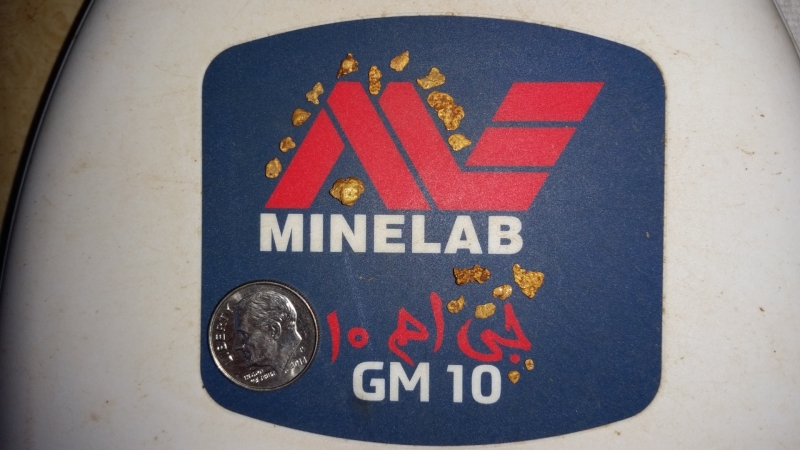
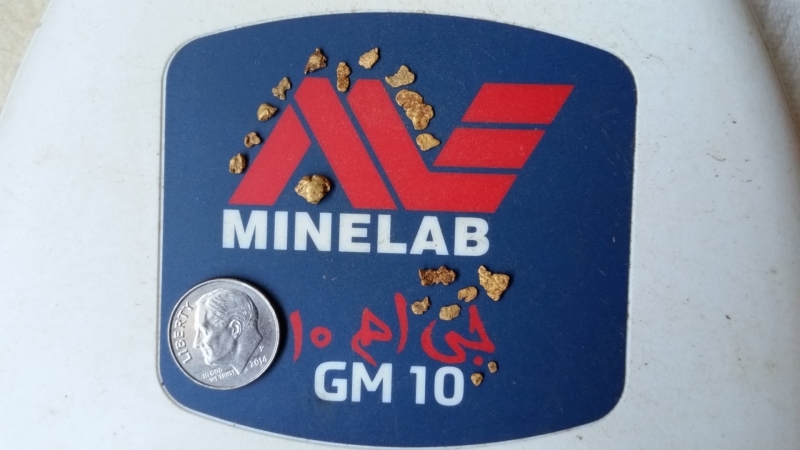
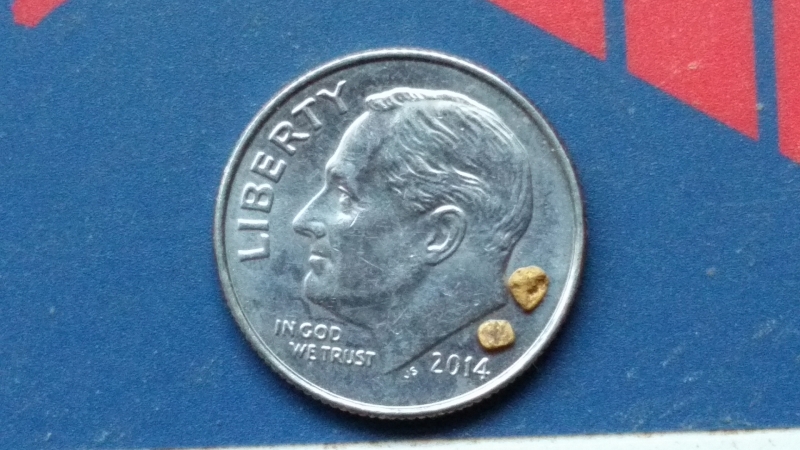
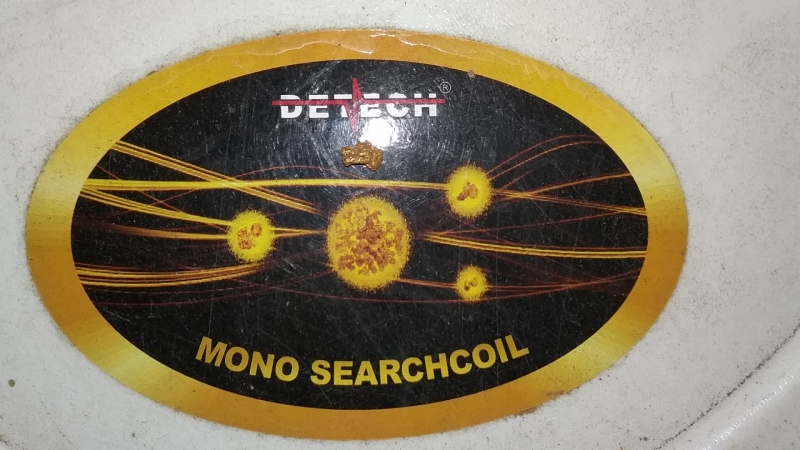
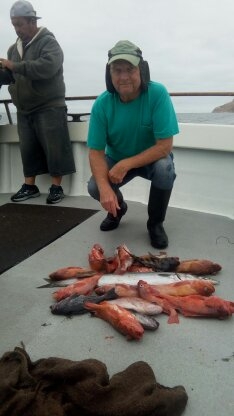
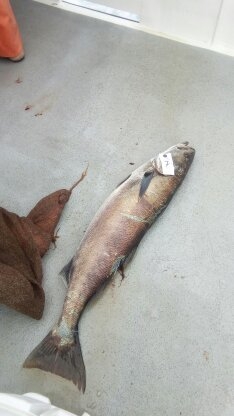
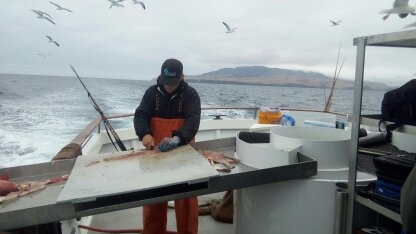
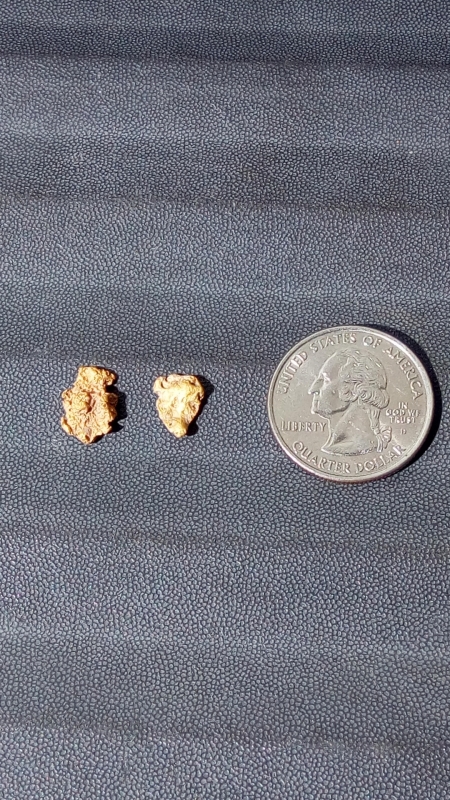



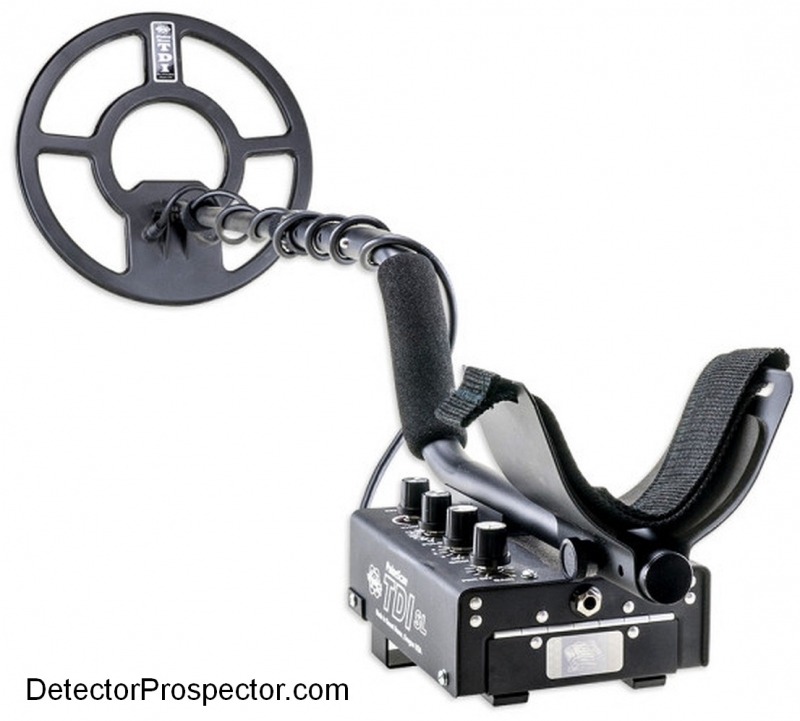
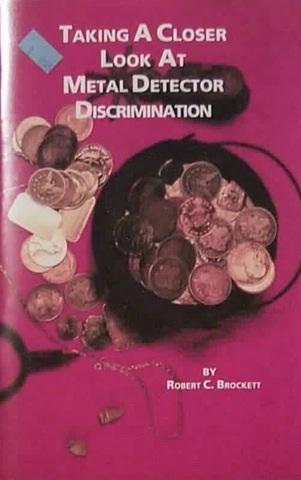
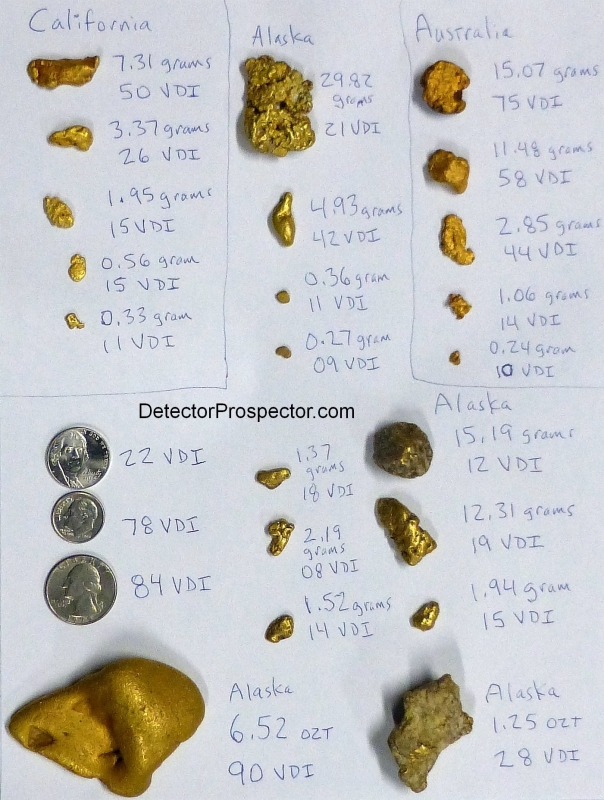
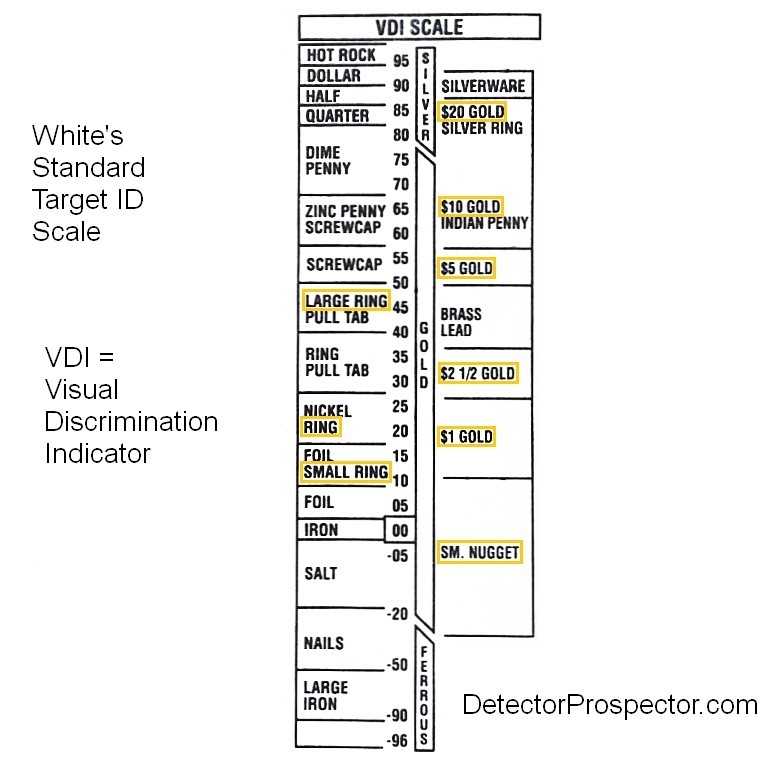

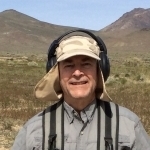


.jpg.d36fcd52325fe8a6a366d3944c8806e4.thumb.jpg.7439025c7a6d125b76c4d4495030cde4.jpg)